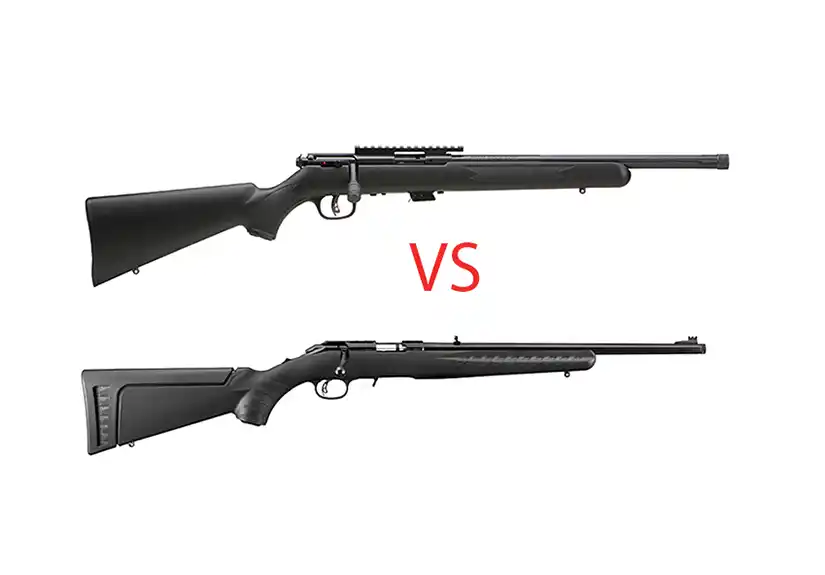At least once per week, I see a post about the Savage MK II vs Ruger American Rimfire. Both are bolt action .22 LR rifles in the $300 range. With some careful shopping, new or used, you can easily spend a little less or a lot more. I’ve got both, and they each have their own pros and cons. At the end of the day, neither is a bad choice though. Their features are similar, and the differences really come down to personal preference. Note that for this article, I’m sticking with the .22 LR versions. Savage has plenty of .17 HMR and .22 WMR options, as does Ruger.
My focus here is on two of the most popular models of these common series of “entry level” bolt action rimfire rifles. For Savage, that’s the MK II FV-SR, and Ruger, it’s models 8301 and 8305. This is not a comprehensive review of each rifle. Rather, it’s an overview that attempts to cover their similarities and differences. Some of them are minor, some may be dealbreakers. If you happen to be shopping for an inexpensive bolt action rimfire, this may help determine which model suits your needs better.
Savage MK II series of rifles
More than a decade after I bought mine, the Savage MK II FV-SR is still a popular choice. It’s got a heavy fluted barrel, no iron sights, and it’s threaded for a suppressor. This is a rifle purposely built for use with a scope, and comes with the scope base installed. If you’re looking for iron sights instead, Savage has you covered. The Savage MK II series has models with MSRPs from as low as $269 up to $729. There are threaded and unthreaded models available, as well as those with irons. You can also get them with polymer and wood stocks, including some from Boyds. Unlike Ruger, Savage has a wide range of left-hand models too. The Savage MK II FV-SR can be found for around $280 pretty regularly. Alternatively, they have a B series, which uses a different magazine, yet comes with a similar range of options.
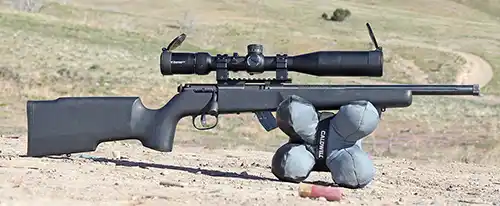
Ruger American Rimfire
Ruger markets their Ruger American Rimfire series a bit differently. There is the base Ruger American Rimfire line, then the Ruger American Rimfire Target line. The former line is only available with polymer stocks, while the latter all have laminate stocks. I’m not going to get into the Ruger Precision Rimfire line, as they are functionally the same, but much more modular. Pricing for the Ruger American Rimfire starts with a slightly higher MSRP of $459, but tops out at a lower $709. I’ve seen online retailers sell them as low as $310, and I’ve bought two used ones (one unfired) for under $300 each. Note that if you get a rifle with iron sights and want to add a scope, you’ll need a pair of Weaver # 12 bases or a comparable mount.
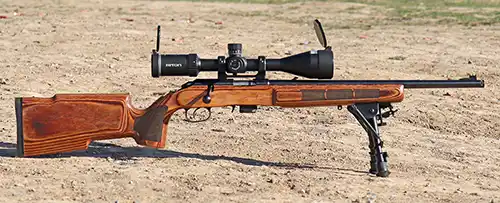
Stocks
Both companies offer their least expensive rifles with polymer stocks. Savage can be a little disappointing here, as their rifles without irons have a very low comb. This makes it difficult to get a good cheek weld with a scope. If you have a scope with a small objective and low enough rings, it will work, but it’s not ideal. Initially, I used a lace-on padded cheek riser. Ruger’s polymer stock comes with a low comb, and a second, taller one for use with optics. Removing the rear sling stud is all that’s required to swap them. They also offer a compact module for reduced length of pull.

Oddly enough, with the more expensive rifles, the reverse is true. Savage seems to have a higher cheek rest on their laminate stocks than Ruger does. They will accommodate larger scopes much more comfortably. Of course, I’m trying to stay focused on the lower-priced rifles. In that case, I give the edge to Ruger if the rifle will be getting a scope. Keep in mind that if an aftermarket stock is part of your future plans, then this is probably not a concern either way.
Aftermarket stock and chassis options
Seeing as how they are also an OEM supplier, it shouldn’t surprise anyone that Boyds offers stocks for Savage and Ruger. If you are considering the heavy barrel MK II, there are eight shapes and 15+ color and wood options. For the tapered barrels, that drops to two shapes. Left-handed actions with heavy barrels get six options. Ruger gets the same color and wood options, but only six shapes. And exactly zero lefty options, because Ruger doesn’t offer bolt action rimfire rifles for wrong-handed shooters. When it comes to chassis options, the only company I could find making them for either (both, actually), was MDT. The MDT LSS-22 appears to be discontinued, but the LSS Gen2 lists options for both actions. At $429, you’d have to really love your rifle.
Barrels
Savage barrels are created using the button rifling process. This is a quick and somewhat inexpensive way to cut the grooves in a barrel. Basically, a tungsten carbide die is pushed through the barrel. It cuts the rifling in a single pass. Quick, easy, and as anyone who has shot a Savage rifle can attest, accurate. Ruger uses a method called cold hammer forging. Each barrel blank has a mandrel placed inside, and then it’s hammered into shape from the outside. Picture a vise clamping down 360 degrees around the barrel with four jaws that go in and out at high speed (hammering). The machines aren’t cheap, but they are fast. Neither has an edge in accuracy though, with individual barrels and ammo preferences being a bigger factor.
Both companies offer threaded and non-threaded versions, and barrels with or without irons. Interestingly, I don’t think Savage combines iron sights with threaded barrels, where Ruger does. If iron sights and a threaded barrel are “must-have” features, you’re probably looking at Ruger. Ruger barrel lengths run from 16″ to 22″, and Savage barrels are 16″ to 21″. While shorter, stiffer barrels can be more accurate, neither company’s longer barrels give up anything in the accuracy department. If absolute accuracy is the biggest concern, then I would suggest budgeting for a different rifle.
Triggers
Savage is known for their AccuTrigger, which has a range of about 2.5 to six pounds from the factory. Ruger’s Marksman Adjustable trigger has a smaller range of three to five pounds. Both are adjustable fairly easily and are overall crisp with a clean break. If you’re willing to swap springs or cut a coil, it’s possible to get them lower. But I prefer to avoid those modifications. Timney does make a nice trigger for the Ruger American Rimfire rifles, but I have not found an aftermarket drop-in trigger for the Savage. For anything other than bench rest shooting, which neither of these rifles is intended for, their stock triggers are more than adequate for most shooters.
Magazines
My MK II came with a single stack, steel, five-round magazine. I have since bought some more five and ten-round magazines. Some users experience feeding issues (I haven’t), which could be ammo-related. There are also reports of the steel magazines literally falling apart. In over a decade, I have had one fail, and I just clamped it and then peened it back together. So not really a huge concern. They are relatively easy to find and should run around $20 today. Ruger uses the same rotary magazines as the 10/22, which are known to be reliable as well as easy to find. The last time I ordered a three-pack, it was about $43 with shipping. Higher capacity and aftermarket magazines are available for both. If reliability matters, stick with factory magazines of ten rounds or less.
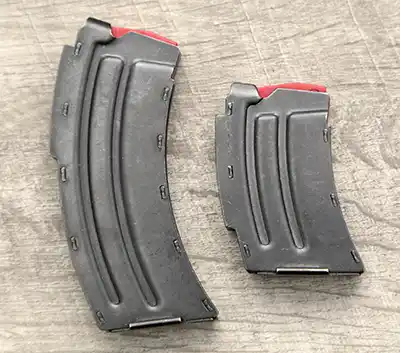
Those extractors
I’ve seen a few posts from Savage owners stating that they had extraction issues. A call to Savage got that sorted with a new extractor mailed out at no charge. Personally, my Savage has been fine. But I have probably had Ruger ship me four extractors to date, for different rifles. Not sure what the deal is there, but customer service for both has been pleasant and responsive. So don’t let that be a dealbreaker, as they are equals when it comes to extractors, apparently.
Final thoughts
Neither of these rifles is going to be as accurate as something like a CZ 457. There may be one or two out there that do shoot exceptionally well with the right ammo. But they’re the exception. If you plan to shoot bulk ammo, they are equal. If you are going to lot test ammo, the general consensus is that Savage is the more accurate option. But I suspect that it’s by a small margin, if at all. Ruger gets the edge for owners of the 10/22 looking to get into a bolt action, for the magazine compatibility. Beyond that, it’s pretty close. Savage generally wins on price, without giving up much in the way of quality. Polishing the bolt on either one will improve the feel of the action a bit. Some users also epoxy steel shot into the stock for added weight.
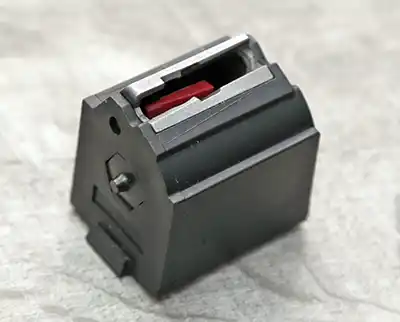
The day I wrote this article, I took both rifles out of my safe, dusted them off, and took them shooting. Neither has an expensive scope. They both are in Boyds stocks, but that wasn’t a necessary upgrade. And I shot mostly inexpensive ammo. When shooting steel targets, broken clays, and empty shotgun shells, they’re equally fun. As I stated up front, if you’re not looking for sub-MOA accuracy, and don’t plan on shooting match ammo, it really comes down to which individual features you prefer. I don’t think you can go wrong with either, as long as you have reasonable expectations.
So who has one or both? Feel free to share your opinions and experiences below. And if you have questions about either, drop them there too. I try to check for them regularly.
